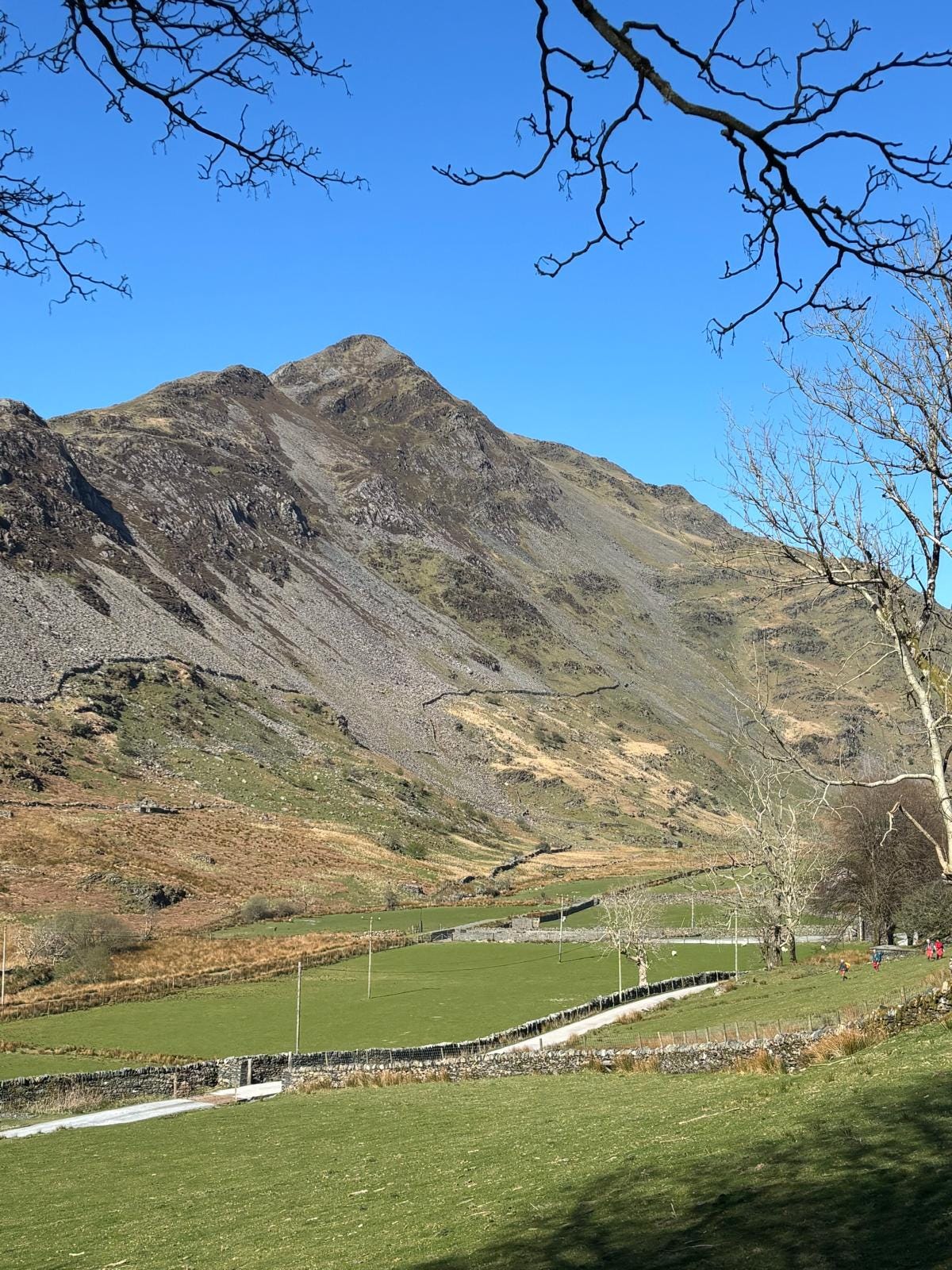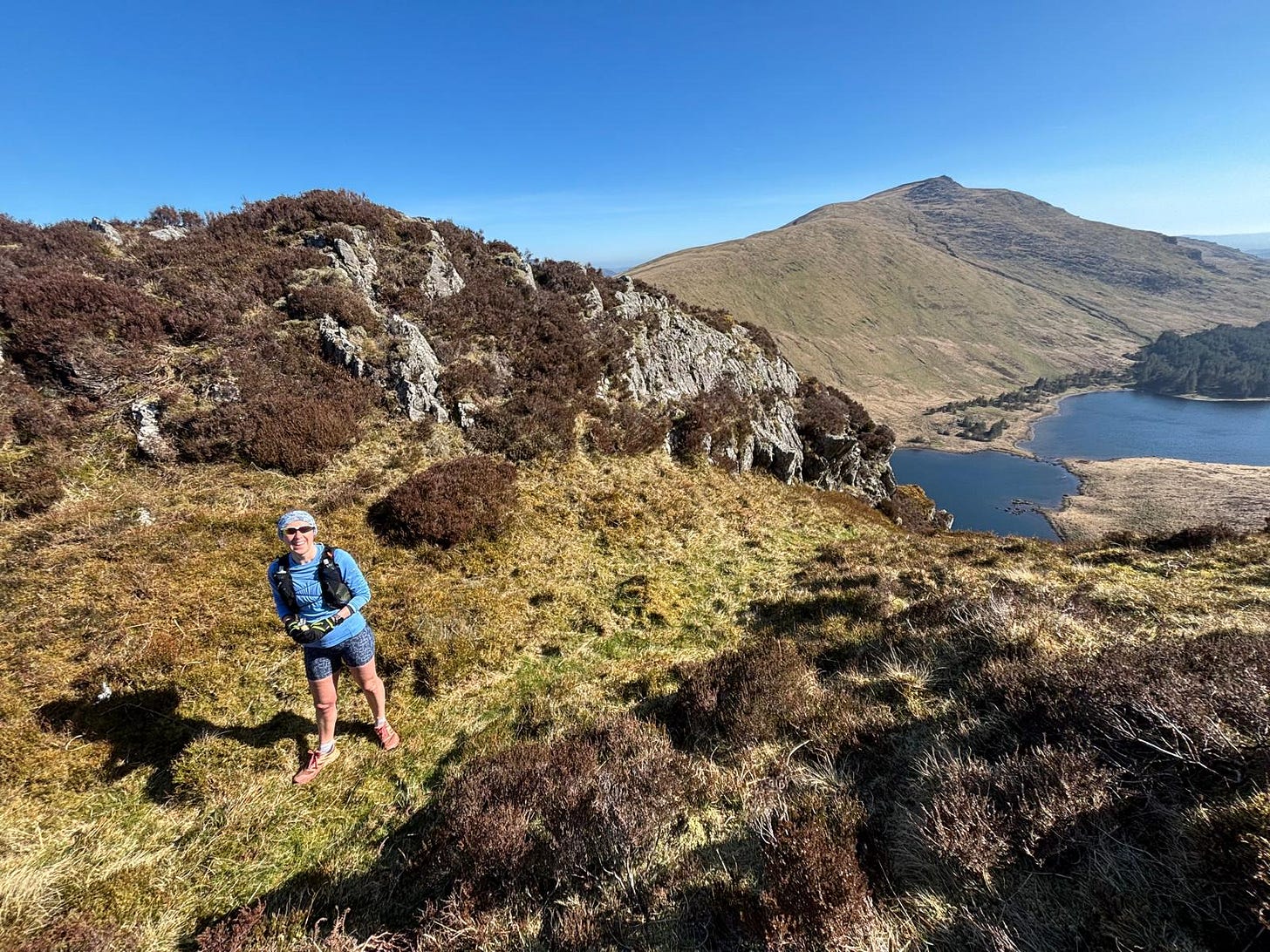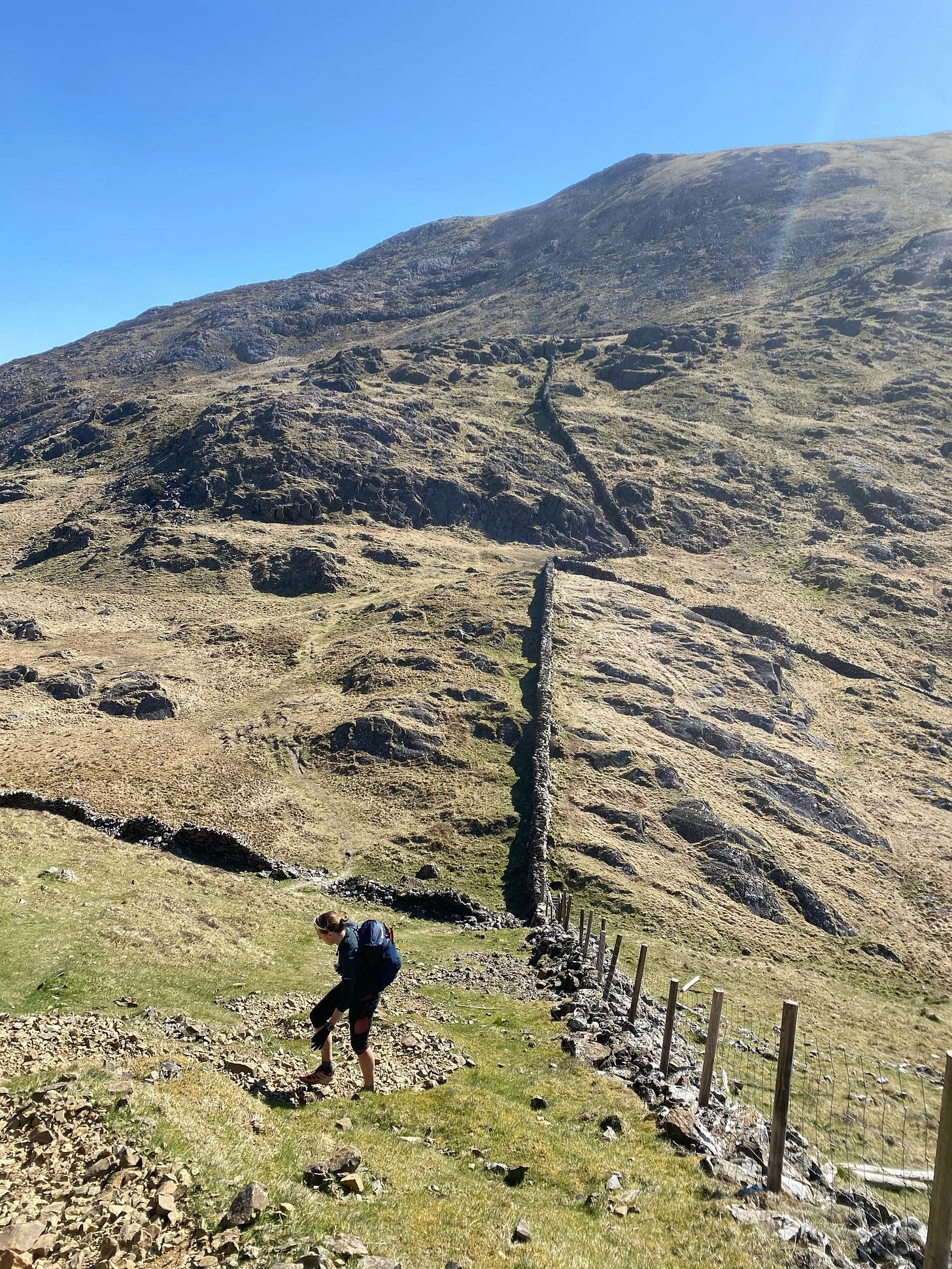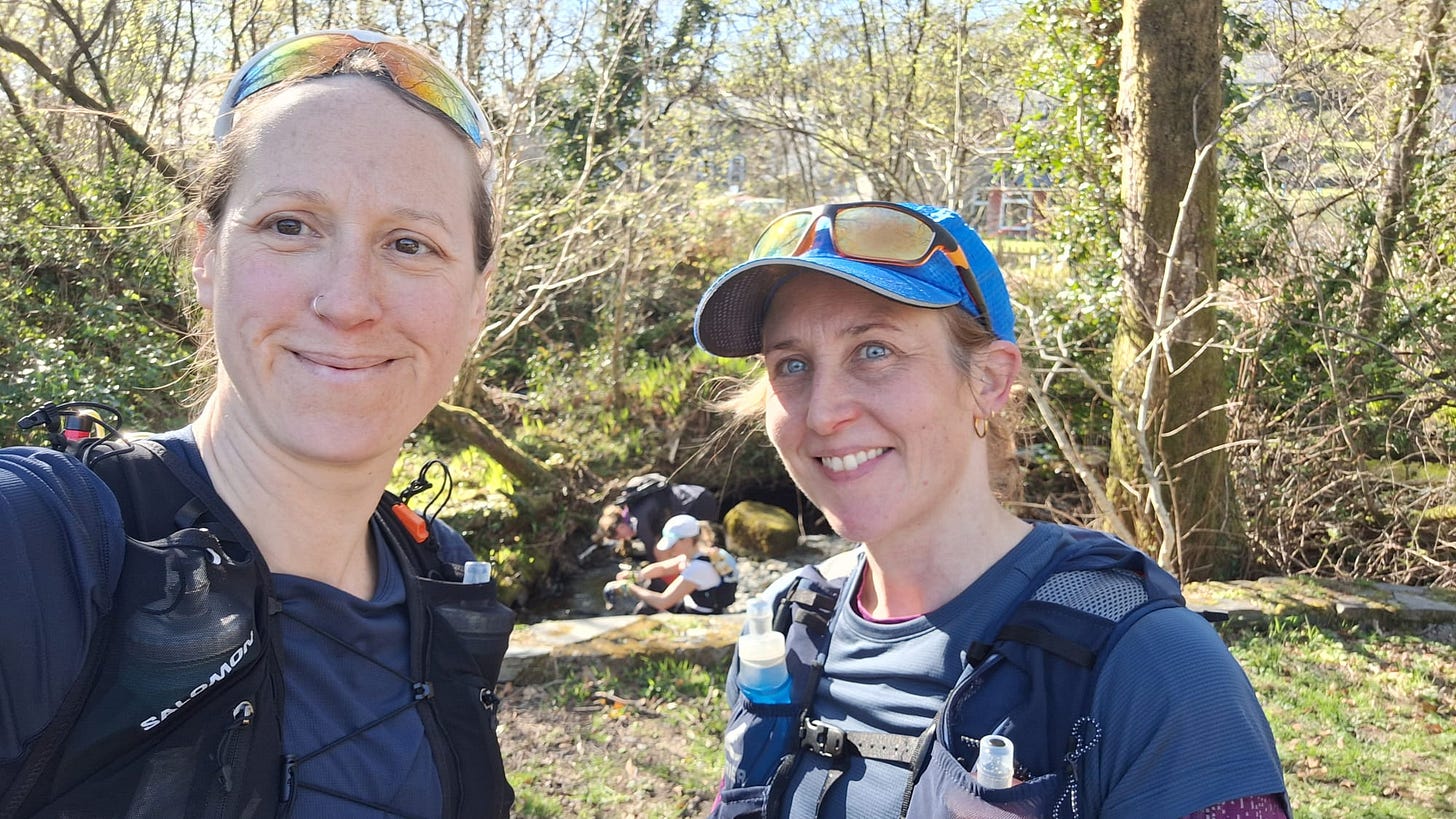How to train for a hilly race when you live somewhere flat
And why am I so weak at hiking uphill?
Next weekend I’m travelling to the Scottish Highlands for a three day ultra marathon. Getting there is going to take about 10 hours – it would be quicker to fly to a race in Africa. Along with the headache of how to get to an event which is so remote it can only be accessed by boat, is how to train for the hills when you live somewhere flat.
The three day multistage race will take in 5,000 metres of elevation, I’m guessing a lot of it through boggy moorland and over scrambly peaks. It is a Beyond the Ultimate event designed to be tough but achievable – with the right training.
I’m not new to ultras and the 125km distance doesn’t faze me – it’s roughly a marathon a day, for just three days, which in my weird world seems perfectly reasonable. But what worries me is the elevation.
I live in south Leicestershire where there are a few gentle rolling hills, but getting any serious climbs is impossible. As a result, I am pretty useless going uphill. In an out of proportion way. I have friends who can storm a hill – relatively speaking – but on the flat I will always outrun them by a fair margin. I have been working on this by building my strength in the gym trying to build the muscles for steep inclines. And to a certain extent it has worked.
I’m actually quite confident running downhill (particularly on tarmac) and don’t get the quad burn I used to feel. My coach always says that strength training is all about strengthening your legs for the downhills rather than the up. This is usually what destroys people in races. And that part I have ticked off.
But my uphill hiking is still painfully slow – so much so that I’m being investigated for various heart / lung conditions at the moment. I just can’t move uphill at a decent pace even when walking.
This was really noticeable on the last day of a five day ultra I raced in 2023. The first 10k was on the flat and I was relatively near the front. But once we got to a 800 metre climb streams of runners starting hiking past me. There was nothing I could do – my legs simply couldn't move any faster. Once I got over the mountain and back down on the flat, I raced off, passing many of the people who had eased past me on the climb. This was after five days of running in Tanzania, in hot and humid conditions. My legs were strong enough to power on but by body could not handle any incline.
Knowing that hills are a big weakness of mine (and there may be something physiological going on that I haven’t identified yet) I was keen to make sure I was prepped enough for the Highlands.
While it is difficult for me to get much elevation on my weekly training runs, I have had hills in mind when booking events – particularly in my last block of training. This is usually the point where specific training – on the terrain you are going to be racing on – is really key.
I was keen to do a Big Bear Event – where you run a loop as many times as you like in six hours. So, I chose their hillier event with each loop having about 160 metres of elevation. Over the six hours I clocked up 50km and 1,280 metres of elevation.
Then a few weeks ago I found myself in Sheffield giving a talk about my forthcoming book Ultra Women at the Sheffield Adventure Film Festival. The talk was at 1pm and I had stayed over the night before at Emma’s – my book co-author. I needed to do a 30km run before the talk, so I got up at 6am and ran up to Stanage Edge in the Peak District from her house. That was 646 metres ticked off.
A month out from race day and I headed to Dartmoor for The Way of the Runner retreat. It was a great way to practice running on moorland, test some of my new kit, and again get in some proper hills. I did 1,500 metres over the weekend including a half marathon distance trail run with 700 metres of elevation.
Three weeks out from race day I went for the biggie. Half a Paddy Buckley Round. This is a route in Eryri (Snowdonia) which covers 47 summits and 100km. Many people hike it over time, gradually ticking off the peaks. Nutty ultrarunners try to do it all in one go, covering the 8,500m elevation in around 24 hours.
Over the Saturday and Sunday I ticked off 24 of the peaks, covering 4,000 metres of elevation in just 29 miles. It was the equivalent of climbing Yr Wyddfa (Snowdon) four times. Some of the climbs were so steep I was on my hands and knees grabbing the moss to heave me up. Once more I was painfully slow on the uphill – my companions disappearing into the distance chatting away as I could barely breathe.
I also used this weekend to test my new race pack which turned out to be invaluable research. The fit was useless, jiggling up and down on my shoulders rather than hugging them comfortably. Within a few miles I realised it would need major revisions for my Scottish adventure (where I have to carry all my clothes, food and sleeping gear for three days). Luckily there were still a few weeks to improve the fit.
With the race now a week away I feel I have done everything logistically possible to get in some hill training, on similar terrain to the race. I have been restricted by time and geography, but a few targeted races, runs and weekends have all been great preparation.
It has also given me a realistic expectation of how long the Highland days might be – as I now know my average speed when taking on a steep or boggy incline. This means I can pack accordingly, taking warmer gear for the evenings when I’m still likely to be out on the course. I will also ensure my headtorch is not buried at the bottom of my bag.
Although it hasn’t been a massive confidence boost as I haven’t seen any uphill progress, at least I know what to expect and how to prepare my kit. And for now, that will just have to be enough.
Pick of the week
Montane have kindly sponsored some of my gear for my forthcoming multi-stage ultra in the Highlands. This includes base layers, a pack, leggings and gloves. My favourite piece so far has to be the Dart Lite long sleeve t-shirt (which I’m wearing in the photo above - on the left).
It’s super thin and light but seems to do a great job of keeping you warm on blustery hill tops, while keeping you cool when the sun comes out on the flat. It’s very breathable and quick drying. But the best thing of all? It doesn’t seem to hold odour. Meaning I can wear it for several days without stinking! Yes, that is a little gross but it’s also super practical when you are having to carry all your gear.
Thanks for reading this week’s newsletter. If you have any running news for me, let me know! Send feedback to lilycanter@yahoo.co.uk or suggest topics you’d like me to cover.








